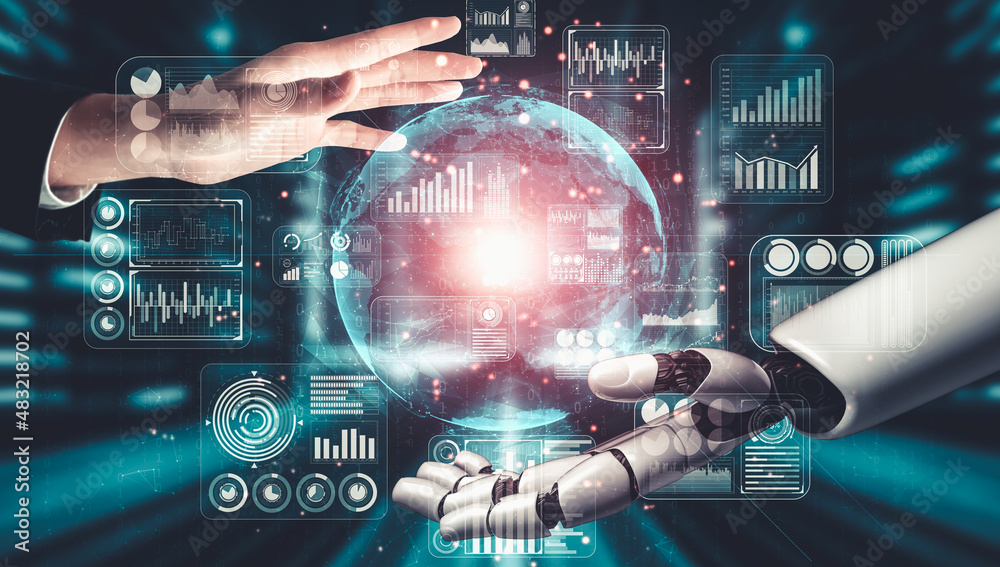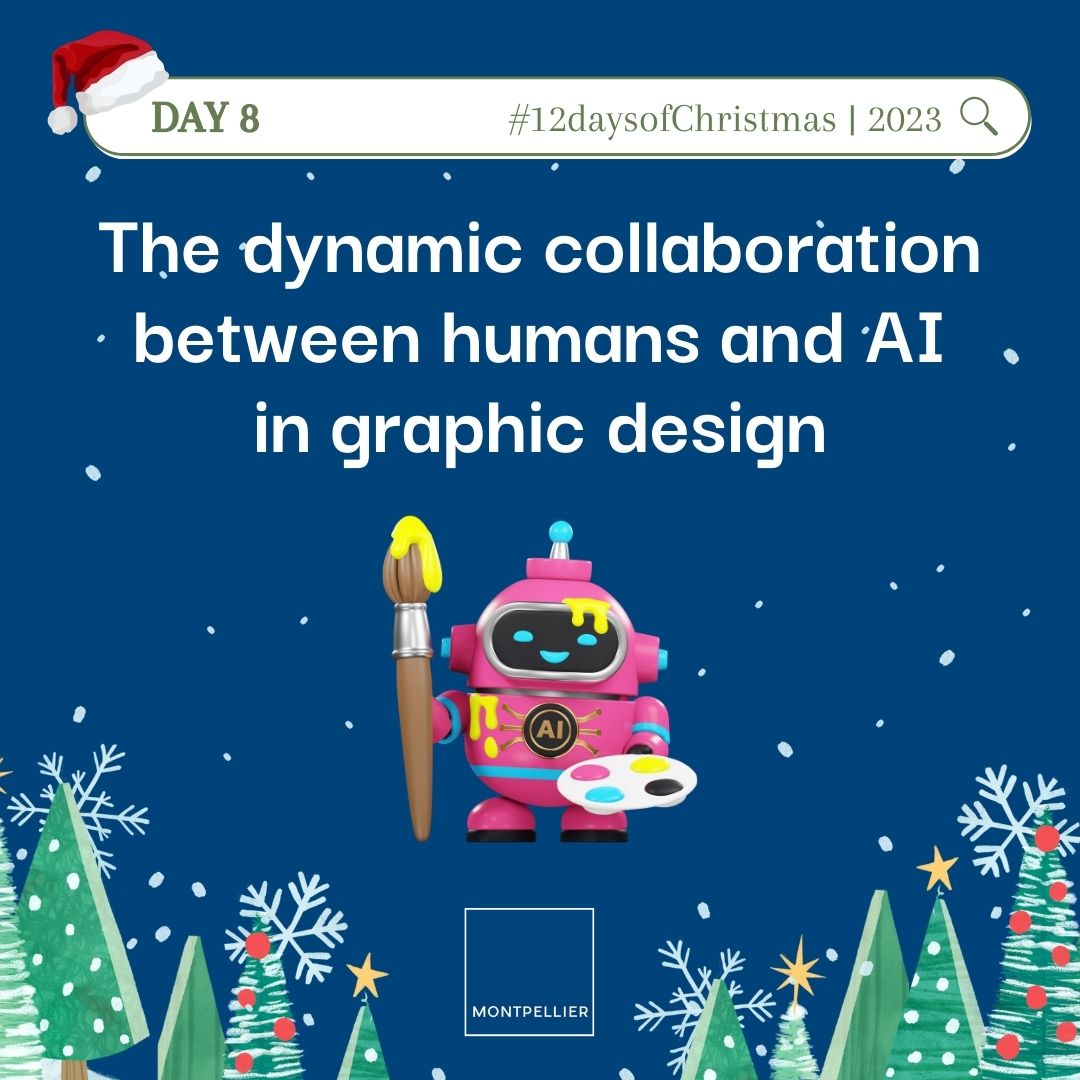Exploring the collaboration between AI and human designers in the future sets the stage for a fascinating examination of how these two powerful forces will shape the creative landscape. This exploration delves into the practical applications of AI as a design tool, analyzing its capabilities to augment human creativity in ideation, brainstorming, and concept development. We’ll investigate various human-AI collaboration models, weighing their benefits and drawbacks, and addressing crucial ethical considerations like algorithmic bias and the potential displacement of human designers.
The future of design education, the evolution of design aesthetics, and the emergence of entirely new design paradigms will also be explored, painting a comprehensive picture of this transformative partnership.
AI as a Design Tool
AI is rapidly transforming the design landscape, moving beyond simple automation to become a powerful partner in the creative process. Its ability to analyze vast datasets, identify patterns, and generate novel solutions is augmenting human creativity, leading to more efficient and innovative design outcomes. This shift necessitates a reimagining of the designer’s role, from sole creator to curator and collaborator with intelligent systems.
AI Assistance in Ideation and Concept Development
AI tools are proving invaluable in the initial stages of design, assisting designers with ideation, brainstorming, and concept development. These tools can analyze existing design trends, user preferences, and market data to suggest innovative directions and help overcome creative blocks. For example, AI-powered platforms can generate numerous design variations based on specified parameters, allowing designers to explore a wider range of possibilities than would be feasible manually.
This accelerates the exploration phase, enabling designers to focus their time and energy on refining the most promising concepts. Furthermore, AI can identify potential design flaws or inconsistencies early in the process, preventing costly revisions later on.
Examples of AI Design Tools and Their Limitations
Several AI tools are already impacting the design process. Midjourney and Dall-E 2, for instance, generate images from text prompts, allowing designers to quickly visualize concepts and explore different stylistic approaches. These tools are particularly useful for generating initial concepts or exploring a wide range of visual options. However, they currently have limitations in terms of precise control over details and the ability to seamlessly integrate generated assets into larger design projects.
Other tools, like Adobe Sensei, offer more integrated functionalities within existing design software, automating tasks such as image upscaling, content-aware fill, and object selection, freeing designers to focus on higher-level creative tasks. A key limitation of many current AI design tools is the reliance on large datasets for training, which can sometimes lead to biases or limitations in the range of generated outputs.
Furthermore, the ethical implications of AI-generated content, such as copyright and originality, remain areas of ongoing discussion and development.
AI-Powered Personalization and Customization
The potential for AI to personalize and customize design outputs based on user preferences is immense. By analyzing user data, including demographics, behavioral patterns, and stated preferences, AI can generate designs tailored to individual needs and tastes. This capability is particularly relevant in fields like e-commerce, where personalized product designs or marketing materials can significantly improve user engagement and conversion rates.
For instance, AI could automatically generate variations of a website layout optimized for different user segments or create customized product packaging based on individual customer preferences. However, ethical considerations around data privacy and the potential for manipulative design practices need careful consideration as this technology develops.
Hypothetical Workflow Integrating AI Tools
The following table illustrates a hypothetical workflow integrating AI tools into a typical web design project.
| Stage | AI Tools Used | Designer Actions | Outcome |
|---|---|---|---|
| Ideation & Research | Trend analysis tools, user preference data analysis | Define project goals, analyze user data, brainstorm initial concepts | Clear project brief, initial design directions |
| Concept Development | AI image generation tools (e.g., Midjourney, Dall-E 2), style transfer tools | Generate visual concepts, explore different styles, refine initial ideas | Multiple visual concepts, initial mood boards |
| Design & Prototyping | AI-powered design tools (e.g., Adobe Sensei), automated layout generation | Refine chosen concept, create high-fidelity prototypes, test usability | High-fidelity prototype, user testing data |
| Iteration & Refinement | AI-powered feedback analysis tools, A/B testing platforms | Analyze user feedback, iterate on design based on data, optimize for performance | Final design, optimized for user experience and conversion |
Human-AI Collaboration Models
The integration of artificial intelligence (AI) into the design process is rapidly evolving, leading to a diverse range of collaborative models between human designers and AI systems. Understanding these models, their strengths, weaknesses, and the challenges they present is crucial for maximizing the potential of AI in design while mitigating potential drawbacks. This section explores several key approaches to human-AI collaboration in design.
Different collaboration models leverage AI’s capabilities in distinct ways, impacting the designer’s role and the overall design process. The choice of model depends heavily on the project’s complexity, the designer’s skillset, and the specific tasks AI is best suited to handle. Each model presents a unique balance of human creativity and AI efficiency.
AI as a Collaborator
This model positions AI as an equal partner in the design process. The human designer and the AI system work together, exchanging ideas and iteratively refining designs. The AI might generate design options, provide feedback on the designer’s work, or assist with tasks like generating variations or exploring different design parameters. Benefits include increased creative exploration and potentially faster design cycles due to AI’s ability to rapidly process information and generate numerous options.
However, drawbacks include the need for a high level of designer expertise to effectively guide and interpret the AI’s contributions, and potential challenges in managing the collaborative workflow. For example, a human designer might use an AI to generate multiple logo variations based on initial sketches, then select and refine the most promising ones.
AI as a Tool, Exploring the collaboration between AI and human designers in the future
In this model, AI acts as a sophisticated design tool, assisting the human designer with specific tasks. The designer retains complete control over the creative direction, using the AI to automate repetitive or time-consuming tasks, such as image resizing, color palette generation, or initial layout design. This approach is beneficial for streamlining the design workflow and freeing up the designer to focus on higher-level creative decisions.
However, the AI’s role is limited, and the designer’s skill remains paramount. The designer might use an AI-powered tool to quickly create multiple variations of a website layout based on pre-defined parameters, then manually fine-tune the chosen layout based on aesthetic and usability considerations.
AI as a Supervisor
This model inverts the traditional power dynamic. The AI system evaluates the designer’s work, providing feedback and suggestions for improvement based on predefined criteria, such as user experience guidelines or brand consistency. While this approach can help ensure design quality and consistency, it might stifle creativity if the AI’s feedback is overly restrictive. It also requires careful calibration of the AI’s evaluation parameters to avoid bias or overly rigid constraints.
This model is suitable for projects requiring strict adherence to design standards, like creating user interfaces for a specific software application. The AI could analyze a designer’s interface mockups for compliance with accessibility guidelines, highlighting areas needing improvement.
Challenges in Establishing Effective Human-AI Partnerships in Design
Several challenges hinder the establishment of truly effective human-AI partnerships in design. These include the need for designers to develop new skills in working with AI systems, ensuring the AI’s output is unbiased and aligned with human values, and addressing potential job displacement concerns. Furthermore, effective communication between human and AI is crucial, requiring designers to understand how to interpret and utilize AI-generated feedback effectively.
The ethical implications of using AI in design, such as potential bias in algorithms, also need careful consideration.
Choosing a Collaboration Model: A Decision-Making Process
The optimal collaboration model depends on several factors. A flowchart could guide this decision-making process. The flowchart would start with a question regarding project complexity (simple, medium, complex). Simple projects might best utilize AI as a tool, while complex projects might benefit from AI as a collaborator. The next decision point would assess designer expertise (beginner, intermediate, expert).
Beginners might rely more heavily on AI as a supervisor or tool, while experts might be comfortable with AI as a collaborator. Finally, the flowchart would consider the specific tasks (repetitive, creative, analytical). Repetitive tasks are ideal for AI as a tool, while creative tasks might be best tackled with AI as a collaborator. The flowchart would then lead to the appropriate collaboration model based on the answers provided.
The resulting model would ensure the most effective use of AI while leveraging the human designer’s unique skills and experience.
Ethical Considerations and Bias Mitigation

The integration of AI into design processes presents exciting possibilities but also raises significant ethical concerns. The potential for algorithmic bias, the displacement of human designers, and the lack of transparency in AI decision-making processes demand careful consideration and proactive mitigation strategies. Addressing these challenges is crucial for ensuring responsible and equitable AI implementation in the design field.Algorithmic bias, inherent in AI systems trained on biased data, can perpetuate and amplify existing societal inequalities within design outputs.
For example, an AI trained primarily on images of a certain demographic might generate designs that disproportionately cater to that group, excluding or misrepresenting others. Similarly, the automation of design tasks could lead to job displacement for human designers, requiring careful consideration of workforce transition and retraining initiatives. The “black box” nature of some AI algorithms also raises concerns about accountability and transparency, making it difficult to understand how AI arrives at specific design choices.
Algorithmic Bias Mitigation Strategies
Mitigating algorithmic bias requires a multi-faceted approach. This involves carefully curating and diversifying the datasets used to train AI models, ensuring they represent a broad range of demographics, perspectives, and cultural contexts. Regular audits of AI systems are also essential to identify and address any biases that emerge. Techniques like fairness-aware machine learning, which incorporates fairness constraints into the training process, can help minimize bias.
Furthermore, human oversight and intervention remain crucial to ensure that AI-generated designs align with ethical guidelines and societal values. Employing diverse teams of designers and developers involved in the AI development process helps to challenge inherent biases from the outset.
Ensuring Transparency and Accountability
Transparency and accountability are paramount in the responsible use of AI in design. This necessitates the development of explainable AI (XAI) techniques that provide insights into the decision-making processes of AI systems. XAI aims to make the reasoning behind AI-generated designs understandable to human users, allowing for scrutiny and correction of biases or errors. Establishing clear lines of responsibility for the outcomes of AI-generated designs is also critical.
This might involve documenting the data used to train the AI, the algorithms employed, and the human oversight involved in the design process. Clear guidelines and regulations governing the use of AI in design can further enhance accountability. Regular audits and independent evaluations can provide assurance that AI systems are operating ethically and responsibly.
Best Practices for Responsible AI Implementation in Design
Implementing AI responsibly in design requires a commitment to ethical principles and proactive mitigation strategies. The following best practices can guide the process:
- Diverse and Representative Datasets: Use training datasets that accurately reflect the diversity of the target audience, avoiding overrepresentation of specific groups.
- Algorithmic Auditing and Bias Detection: Regularly audit AI systems for bias, using both automated tools and human review.
- Explainable AI (XAI): Employ XAI techniques to make the decision-making processes of AI systems transparent and understandable.
- Human Oversight and Intervention: Maintain human oversight throughout the design process, allowing for intervention and correction as needed.
- Transparency and Documentation: Clearly document the data, algorithms, and human involvement in the design process.
- Ethical Guidelines and Standards: Adhere to established ethical guidelines and standards for AI development and deployment.
- Continuous Monitoring and Improvement: Continuously monitor the performance of AI systems and make improvements to address any emerging issues.
- Workforce Transition and Retraining: Invest in programs to support human designers in adapting to the changing landscape of the design profession.
The Future of Design Education and Skillsets

The rapid integration of artificial intelligence (AI) into design workflows necessitates a fundamental shift in design education. Preparing future designers requires moving beyond traditional skill sets to encompass a deeper understanding of AI’s capabilities and limitations, fostering collaborative approaches, and cultivating ethical awareness. This adaptation ensures designers can effectively leverage AI as a powerful tool while retaining their crucial human-centric design sensibilities.
Adapting Design Education for an AI-Integrated World
Design curricula must evolve to integrate AI principles and practices across various design disciplines. This isn’t about replacing human designers but about empowering them with the knowledge and skills to collaborate effectively with AI systems. Traditional design courses need to be augmented with modules focusing on AI’s role in design processes, fostering critical thinking around AI’s capabilities and limitations, and developing practical skills in using AI-powered design tools.
Essential Skills and Competencies for AI-Integrated Design
Designers of the future will require a unique blend of technical and soft skills. Crucial technical competencies include proficiency in using AI design tools, understanding AI algorithms and their limitations, and the ability to interpret and refine AI-generated outputs. Equally important are soft skills such as critical thinking, problem-solving, creativity, communication, and ethical reasoning – all vital for effective human-AI collaboration.
Furthermore, a deep understanding of user-centered design principles will remain paramount, ensuring that AI-assisted design solutions remain human-centered and inclusive. For example, designers need to be able to identify and mitigate potential biases embedded within AI algorithms.
Emerging Design Roles in an AI-Driven Landscape
The integration of AI is not only changing existing design roles but also creating entirely new ones. For example, “AI Design Ethicists” will be crucial for navigating the ethical implications of AI-driven design, ensuring fairness and mitigating bias. “Prompt Engineers” will specialize in crafting effective prompts for AI tools to generate optimal design outputs. “AI Design Trainers” will focus on teaching AI systems to understand and respond to human design preferences and needs.
“AI-Human Collaboration Managers” will oversee and optimize the workflows between human designers and AI systems, ensuring efficient and effective collaboration.
A Hypothetical AI-Integrated Design Curriculum
A redesigned curriculum should incorporate AI-related topics throughout the design program. This holistic approach will better prepare graduates for the realities of AI-integrated design practices. A sample curriculum might include:
- Introduction to AI in Design: This course explores the fundamental concepts of AI, machine learning, and their applications in various design fields. Students will learn about different AI-powered design tools and their capabilities.
- AI-Assisted Design Tools and Techniques: This course provides hands-on experience using various AI-powered design software and platforms. Students will learn to leverage these tools for different design tasks, such as generating design concepts, optimizing layouts, and creating variations.
- Ethical Considerations in AI Design: This course focuses on the ethical implications of using AI in design, including bias detection and mitigation, data privacy, and responsible innovation. Students will learn to critically evaluate the ethical dimensions of AI-driven design solutions.
- Human-AI Collaboration in Design: This course explores different models of human-AI collaboration in design, examining the strengths and weaknesses of each approach. Students will develop strategies for effective teamwork between human designers and AI systems.
- Advanced Topics in AI for Design: This course delves into more advanced topics, such as generative design, AI-driven personalization, and the future of AI in design. Students will explore cutting-edge research and emerging trends in the field.
Impact on Design Aesthetics and Innovation
The integration of artificial intelligence into the design process promises a profound shift in aesthetic sensibilities and a dramatic acceleration of innovation. AI’s ability to process vast datasets, identify patterns, and generate novel solutions offers unprecedented opportunities for designers, pushing the boundaries of creativity and efficiency. This section will explore how AI influences design aesthetics, accelerates innovation, and potentially creates entirely new design paradigms.AI’s influence on design aesthetics is multifaceted.
By analyzing massive amounts of existing design data, AI algorithms can identify recurring motifs, color palettes, and compositional strategies across various styles and periods. This allows designers to leverage these insights to either create designs that resonate with established aesthetic preferences or to consciously deviate from them, producing intentionally disruptive or unexpected results. Moreover, AI can generate variations on existing designs, offering a wider range of options and enabling rapid prototyping and experimentation.
This iterative process, powered by AI, can lead to the discovery of new aesthetic combinations and styles previously unfathomable.
AI-Accelerated Design Innovation
AI’s capacity to process and analyze complex data far surpasses human capabilities. This advantage translates into significantly accelerated innovation in design. AI can rapidly explore a vast design space, generating numerous variations based on specified parameters and constraints. This allows designers to quickly identify optimal solutions, test different approaches, and refine designs iteratively, leading to more efficient and effective design processes.
For instance, in architectural design, AI can optimize building layouts for energy efficiency, structural integrity, and aesthetic appeal simultaneously, considering factors that would be computationally overwhelming for human designers. This results in innovative designs that are both aesthetically pleasing and functionally superior.
AI-Generated Design Paradigms
Beyond enhancing existing design processes, AI has the potential to generate entirely new design paradigms. By identifying unexpected relationships between data points and exploring unconventional design spaces, AI can lead to the creation of designs that are not only novel but also fundamentally different from anything previously conceived. This disruptive potential is particularly exciting in fields like material science, where AI can predict and optimize the properties of new materials, leading to the development of innovative design solutions with unique aesthetic and functional characteristics.
For example, AI could predict the structural properties of a novel bio-material and then design a building that utilizes this material in a way that is both aesthetically stunning and structurally sound, something beyond current human design capabilities.
Futuristic Design Scenario: AI in Architectural Design
Consider a future where AI plays a central role in architectural design. Architects use advanced AI tools to create buildings that seamlessly integrate with their environment, responding dynamically to factors like sunlight, temperature, and even the emotional states of occupants. The design process involves a collaborative interplay between human architects and AI systems. The architect defines high-level design goals and constraints, while the AI explores potential solutions, generating numerous designs that meet these criteria.
The AI can also simulate the building’s performance under various conditions, providing real-time feedback and allowing the architect to refine the design iteratively.
This futuristic scenario features buildings that adapt to their surroundings, optimizing energy consumption, creating comfortable interior environments, and responding to the needs of occupants in real-time. AI-driven generative design algorithms create organic, biomimetic structures, resulting in visually stunning and ecologically conscious architecture. The integration of AI allows for the exploration of complex geometries and material combinations that would be impractical or impossible to achieve through traditional methods.
End of Discussion: Exploring The Collaboration Between AI And Human Designers In The Future

The future of design hinges on a successful collaboration between human ingenuity and artificial intelligence. While challenges exist, the potential for increased efficiency, innovative solutions, and personalized design experiences is undeniable. By proactively addressing ethical concerns and adapting design education to integrate AI skills, we can harness the power of this partnership to create a more creative, inclusive, and impactful design industry.
The journey ahead promises exciting advancements and the creation of designs previously unimaginable, reshaping how we interact with the world around us.

